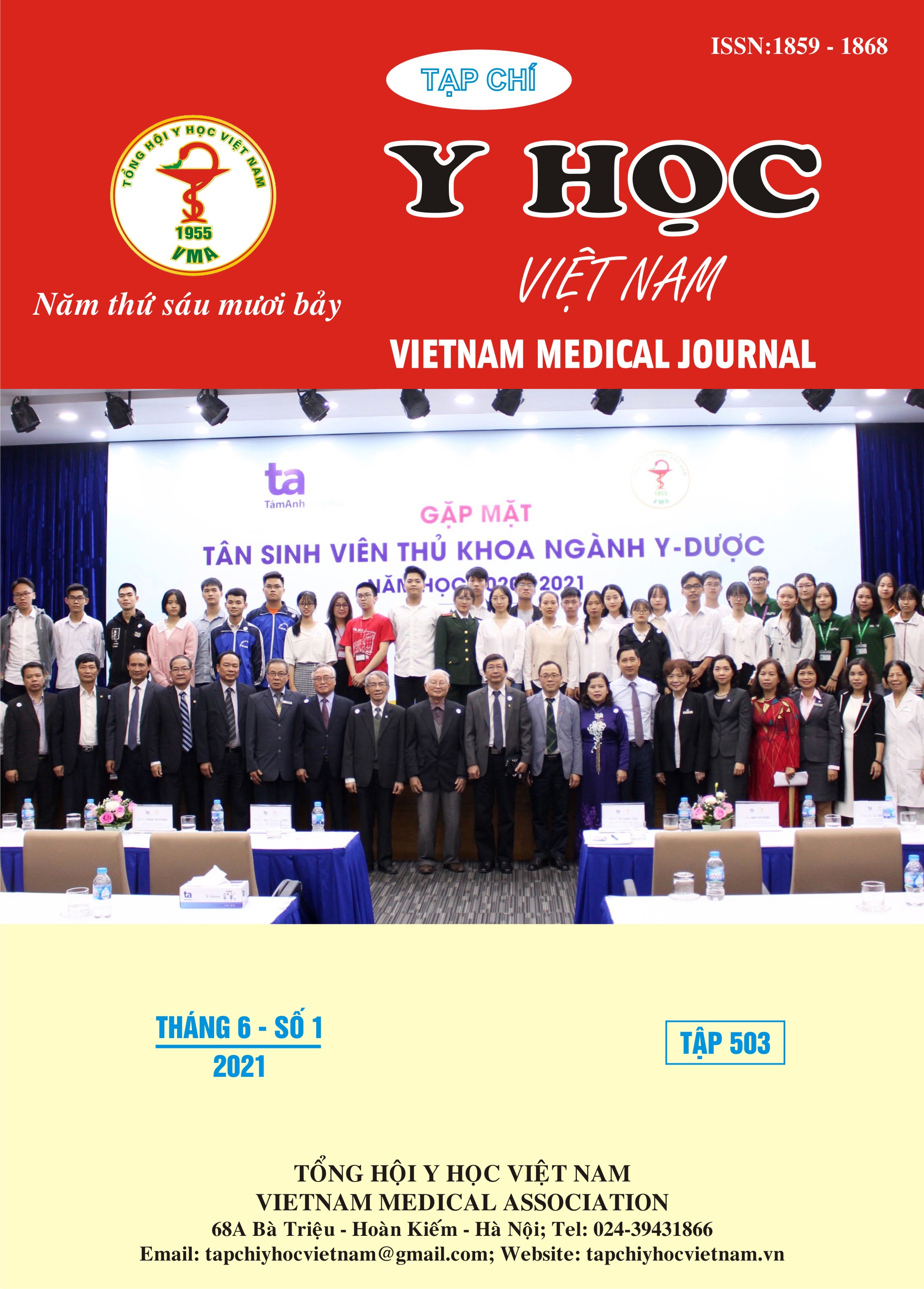EFFECTIVE INTERVENTION FOR IMPROVING NUTRITIONAL PRACTICE AND COMPLIANCE WITH TYPE 2 DIABETES PATIENTS IN AGRICULTURAL HOSPITAL
Main Article Content
Abstract
Objective: Evaluation of the effectiveness of interventions to improve nutrition practices and adherence to medication use in patients with type 2 diabetes, outpatients at Agricultural General Hospital (2016-2017). Methods: Horizontal cut representation; Direct health education interventions through the hospital's anti-diabetic education club activities to improve knowledge and practice on nutrition, physical exercise, adherence to medication in treatment Treatment and control of blood sugar, periodical medical examination for patients. Assessment of nutrition practice and adherence to medication use of intervention subjects by questionnaire combined with analysis of secondary data in patient's medical records; calculate efficiency index. Results: The effectiveness of improving the use of regular daily foods in a good direction for people with diabetes such as: eating a meal of rice equivalent to 45-65g of starch has increased from 58.9% to 74.1% (p< 0.001). Eating green vegetables ≥ 5 standard units/day increased from 25.0% to 76.4% (efficiency index reached =205.6%). Eating ripe fruit from ≥ 2 hours after main meal increased from 41.2% to 80.2% (CSHQ=94.7%). Eating meat decreased, but eating foods 3-4 times a week such as fish, seafood, tofu, beans/beans, peanuts/sesame beneficial for people with diabetes all increased after the intervention. Adherence to using medication has improved significantly, from 84.6% to 98% (efficiency index reached =15.8%). Conclusion: The effectiveness of improving the use of good foods for people with diabetes increased significantly after the intervention; foods that are not good for people with diabetes have decreased significantly. The effectiveness of medication adherence in treatment was significantly improved (CSHQ=15.8 %).
Article Details
Keywords
Intervention, nutrition, treatment adherence, diabetes, agriculture hospital
References
2. International Diabetes Federation (2017). IDF DIABETES ATLAS Eighth edition 2017.
3. Bệnh viện Nội tiết Trung ương (2014). Báo cáo kết quả điều tra dịch tễ học bệnh đái tháo đường toàn quốc năm 2012, Hà Nội.
4. Bộ Y tế (2015). Báo cáo chung Tổng quan ngành y tế năm 2015: Tăng cường y tế cơ sở hướng tới bao phủ chăm sóc sức khỏe toàn dân, 20-21.
5. Bộ Y tế (2017). Hướng dẫn chẩn đoán và điều trị đái tháo đường týp 2. Quyết định số 3319/QĐ-BYT ngày 19/7/2017 của Bộ trưởng Bộ Y tế V/v Ban hành tài liệu chuyên môn.
6. Lê Thị Hương Giang, Hà Văn Như (2013). Thực trạng và một số yếu tố liên quan đến tuân thủ điều trị bệnh đái tháo đường týp 2 của người bệnh đang điều trị ngoại trú tại bệnh viện 198 năm 2013, Tạp chí Y học thực hành, 893(11): 93-97.
7. Đỗ Văn Doanh (2016). Thực trạng tuân thủ điều trị của người bệnh đái tháo đường týp 2 ngoại trú tại bệnh viện tỉnh Quảng Ninh năm 2016, Tạp chí Khoa học Điều dưỡng, 2(2): 14-21.
8. WHO (1999). Definition, Diagnosis and classification of deabetes millitus and complication, Report of a WHO Consultation, 52.
9. Trung tâm dinh dưỡng lâm sàng Bệnh viện bạch Mai (2019). Hướng dẫn chế độ ăn cho người bệnh đái tháo đường. http://www.bachmai.gov.vn/en/tin-tuc-va-su-kien/bai-viet-chuyen-mon-menuleft-33/5699-trung-tam-dinh-duong-lam-sang-bv-bach-mai-huong-dan-che-do-an-cho-nguoi-benh-dai-thao-duong.html.


